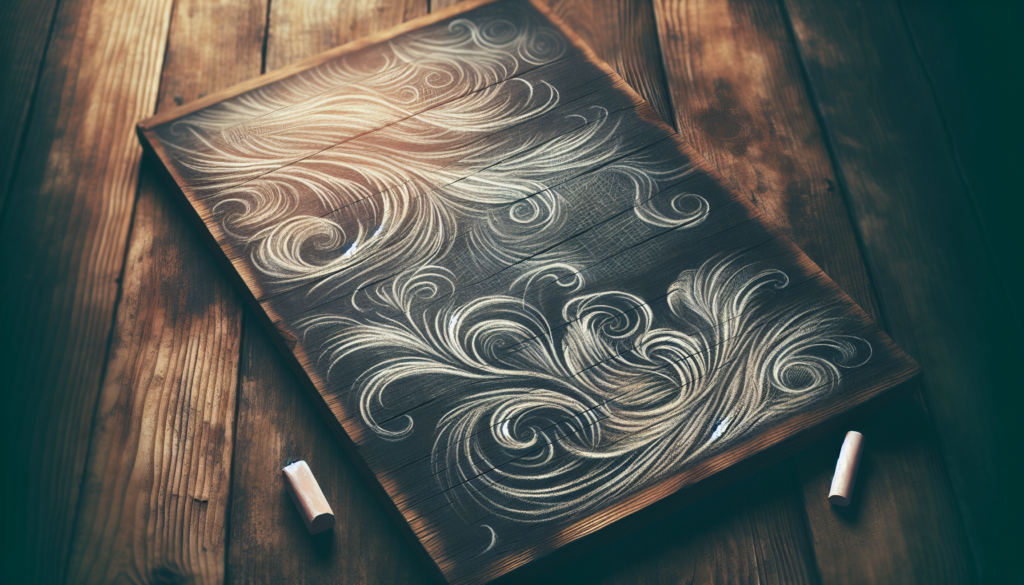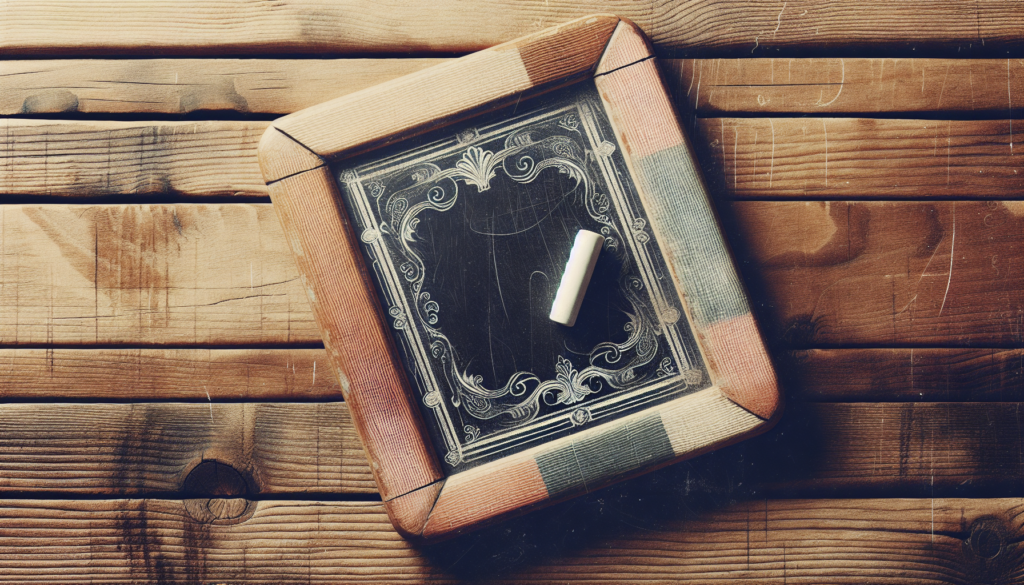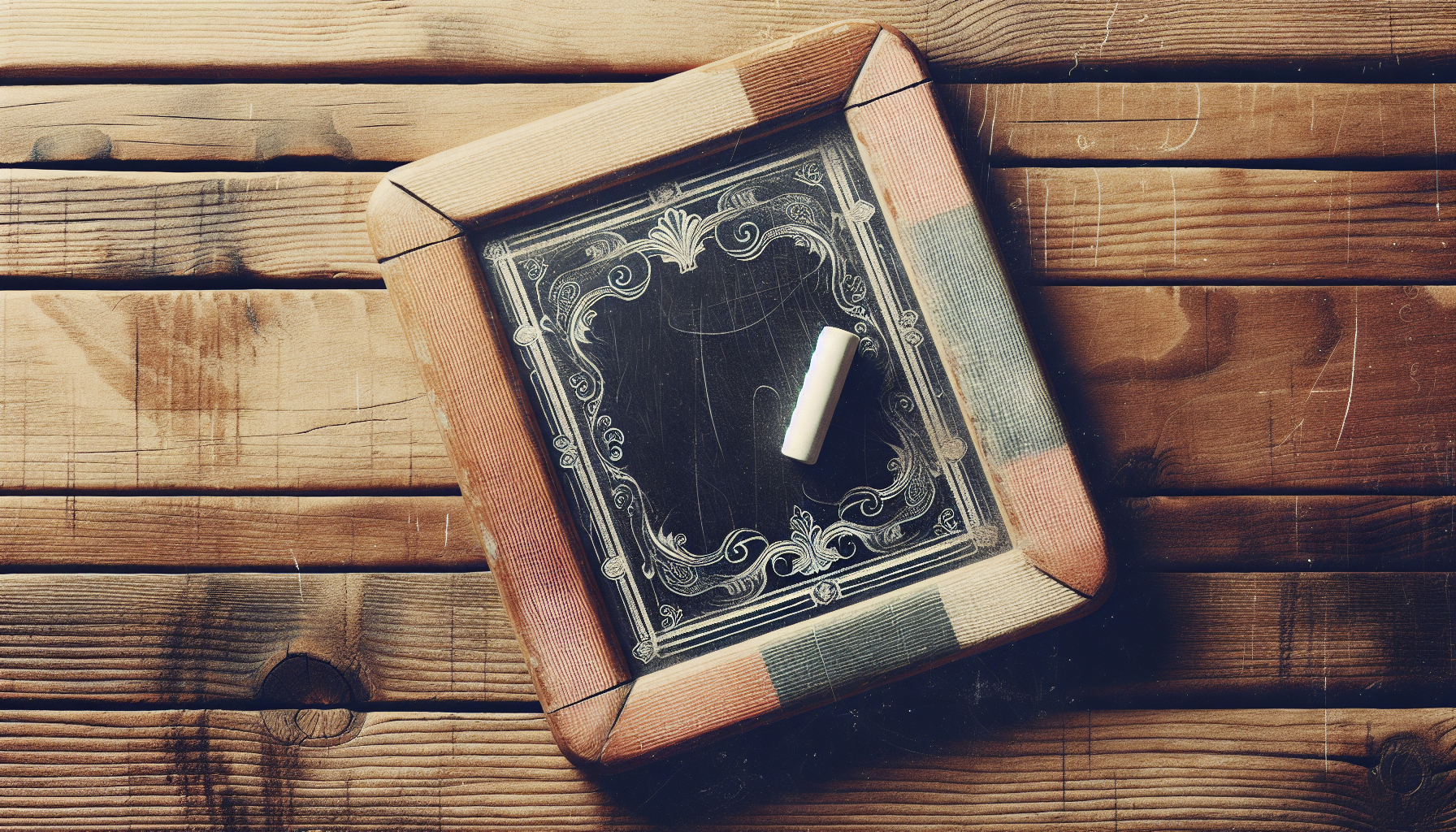Chalkboard paint and chalk paint may sound similar, but these two types of paint serve very different purposes. While both can be used for creative projects, such as repurposing old furniture or adding a decorative touch to a space, the similarities end there. Chalkboard paint is designed to create a surface that can be written on with chalk, while chalk paint is a type of furniture paint that gives a matte, chalky finish. Understanding the distinctions between the two paints is crucial for achieving the desired results in your DIY endeavors. In this article, we will explore the differences between chalkboard paint and chalk paint, and provide insights into when and how to best use each one.

What is Chalkboard Paint?
Definition of Chalkboard Paint
Chalkboard paint is a type of paint that creates a surface on which users can write or draw with chalk. It is designed to mimic the appearance and functionality of a traditional chalkboard, allowing for easy erasing and re-writing. Chalkboard paint is commonly used in educational settings, such as classrooms, but can also be used in homes and offices for decorative and organizational purposes.
Common Uses of Chalkboard Paint
Chalkboard paint has a wide range of uses, both practical and creative. In educational settings, it is often used to create writable surfaces on walls or smaller surfaces, such as desks or doors. This allows teachers and students to easily write and erase information as needed. Chalkboard paint can also be used in homes as a creative way to label storage containers or create a writable surface for family members to leave messages or create artwork. Additionally, chalkboard paint can be used for decorative purposes, such as painting a wall or furniture piece to create an unique and interactive design element.
Characteristics of Chalkboard Paint
Chalkboard paint typically has a matte finish that resembles a traditional chalkboard. It is available in various colors, although black is the most common and popular choice. This type of paint is typically water-based and can be easily applied with a brush or roller. Chalkboard paint is also known for its durability and ability to withstand frequent erasing and re-writing without fading or smudging.
What is Chalk Paint?
Definition of Chalk Paint
Chalk paint is a type of decorative paint that provides a unique finish and is commonly used to transform furniture and other household items. Unlike chalkboard paint, it does not create a writable surface with chalk. Chalk paint is known for its smooth and velvety appearance, as well as its ability to easily adhere to various surfaces without the need for priming or sanding.
Common Uses of Chalk Paint
Chalk paint is often used to give furniture pieces a distressed or vintage look. It can be applied to wood, metal, plastic, and other surfaces, allowing for endless creative possibilities. Many DIY enthusiasts and home decorators opt for chalk paint to revitalize old items or create a shabby chic aesthetic. Chalk paint can also be used to create decorative finishes, such as color-washed or layered effects, giving furniture and accessories a unique and personalized touch.
Characteristics of Chalk Paint
Chalk paint is known for its ease of use. It typically has a thick consistency that provides good coverage, allowing users to achieve their desired finish with minimal effort. One of the key characteristics of chalk paint is its ability to easily distress, meaning that it can be sanded or rubbed to create a worn or aged appearance. Chalk paint is available in a wide range of colors, from neutral tones to vibrant hues, allowing users to customize their creations to suit their personal style.
Differences between Chalkboard Paint and Chalk Paint
Purpose
Chalkboard paint is primarily used to create writable surfaces where users can write or draw with chalk. Its purpose is to mimic a traditional chalkboard and provide a functional space for communication and creativity. On the other hand, chalk paint is primarily used for decorative purposes, specifically to transform and enhance the appearance of furniture and other household items.
Composition
Chalkboard paint is typically made with a combination of paint pigments, binders, and additives that create a matte and durable finish. It is designed to be erasable and withstand regular use. Chalk paint, on the other hand, is made using calcium carbonate, water, and various pigments. This composition gives chalk paint its distinct texture and allows it to adhere well to different surfaces.
Application
Chalkboard paint is typically applied using a brush or roller, similar to regular paint. Multiple coats are usually required to achieve an even and opaque finish. Chalk paint, however, is known for its forgiving application process. It can be applied without the need for priming or sanding, and its thicker consistency allows for easy coverage. Chalk paint can be applied with a brush or even a foam roller, depending on the desired result.
Finish
Chalkboard paint creates a matte and slightly textured finish, similar to that of a traditional chalkboard. This finish is designed to be receptive to chalk and allows for easy erasing. Chalk paint, on the other hand, typically dries to a smooth and velvety finish. This finish is often enhanced by applying a wax or sealer to protect the painted surface and give it a subtle sheen.
Functionalities
Chalkboard paint provides a functional space for writing and drawing with chalk. It is ideal for classrooms, offices, or homes where communication and creativity are emphasized. Chalk paint, on the other hand, enhances the aesthetic appeal of furniture and decorative items. Its unique finish and ability to distress allows users to transform ordinary pieces into personalized and stylish creations.
Purpose
Chalkboard Paint Purpose
The purpose of chalkboard paint is to create a writable surface that can be used for various purposes, such as teaching, brainstorming, or organizing. It provides an interactive platform where ideas, notes, and artwork can be easily created and erased.
Chalk Paint Purpose
The purpose of chalk paint is primarily decorative. It allows users to transform furniture and other items into unique pieces that reflect their personal style. Chalk paint provides an opportunity to update and revitalize outdated or worn-out pieces, giving them new life and character.

Composition
Chalkboard Paint Composition
Chalkboard paint is typically composed of paint pigments, binders, and additives that create its characteristic matte and durable finish. These ingredients are carefully balanced to ensure proper adhesion and erasability while providing a smooth and consistent application.
Chalk Paint Composition
Chalk paint is made using calcium carbonate, water, and various pigments. Calcium carbonate gives the paint its distinctive texture and allows it to adhere well to different surfaces, while water helps with the paint’s application and drying. Pigments are added to create a wide range of colors.
Application
Chalkboard Paint Application
Chalkboard paint can be applied to a variety of surfaces, such as wood, metal, or drywall. Before application, the surface should be clean, dry, and lightly sanded to ensure proper adhesion. The paint can be brushed or rolled onto the surface, with multiple coats needed to achieve full coverage. It is important to follow the manufacturer’s instructions regarding drying time between coats.
Chalk Paint Application
One of the advantages of chalk paint is its forgiving application process. It can be applied to various surfaces without the need for priming or sanding, making it a popular choice for DIY projects. Chalk paint can be applied using a brush or foam roller, depending on the desired finish. Multiple coats may be required to achieve full coverage, and it is recommended to follow the manufacturer’s instructions for drying time between coats.
Finish
Chalkboard Paint Finish
Chalkboard paint dries to a matte finish that mimics the appearance of a traditional chalkboard. This finish is slightly textured to allow for easy writing and erasing with chalk. The surface can be wiped clean with a damp cloth or sponge, ensuring a fresh canvas for new ideas and designs.
Chalk Paint Finish
Chalk paint dries to a smooth and velvety finish. Depending on the desired look, the finish can be left as is or enhanced with a protective wax or sealer. This additional step not only provides a subtle sheen but also helps to protect the painted surface from everyday wear and tear.
Functionalities
Chalkboard Paint Functionalities
Chalkboard paint provides a range of functionalities that make it suitable for educational, organizational, and creative purposes. In educational settings, it allows teachers and students to easily write and erase information, facilitating effective communication and learning. Chalkboard paint can also be used for organization, allowing individuals to create lists, calendars, or notes in a visible and easy-to-update format. The creative possibilities of chalkboard paint are endless, as it provides a platform for artistic expression and imaginative designs.
Chalk Paint Functionalities
Chalk paint offers a variety of functionalities when it comes to decorative projects. It allows users to transform ordinary furniture and household items into personalized pieces that reflect their unique style. The ability to distress chalk paint provides a vintage or aged look, giving items character and charm. Chalk paint also allows for various decorative finishes and techniques, such as color-washing or layering, enabling users to create visually interesting and textured surfaces.
Pros and Cons of Chalkboard Paint
Advantages
- Provides a functional and interactive writable surface
- Easy to apply and maintain
- Allows for easy erasing and re-writing
- Durable and long-lasting
- Can be used in various settings, from classrooms to homes and offices
Disadvantages
- Limited color options, with black being the most common choice
- Can be challenging to achieve a smooth and even application
- Surfaces may require preparation and priming before application
- Erasing can create chalk dust and require regular cleaning
Pros and Cons of Chalk Paint
Advantages
- No priming or sanding needed before application
- Easy to distress, creating unique and personalized finishes
- Wide range of colors available
- Provides a smooth and velvety finish
- Can be used on various surfaces, including wood, metal, and plastic
Disadvantages
- Requires multiple coats for full coverage
- Can be more expensive compared to regular paint
- Additional steps, such as waxing or sealing, may be needed for protection
- May not be suitable for surfaces with heavy use or high moisture areas
In conclusion, chalkboard paint and chalk paint are two distinct types of paint that serve different purposes and offer different functionalities. Chalkboard paint is primarily used to create writable surfaces for teaching, organizing, or creative expression, while chalk paint is used for decorative purposes on furniture and household items. Understanding the differences between these two types of paint allows individuals to make informed choices when selecting the appropriate paint for their specific needs and desired outcomes.



